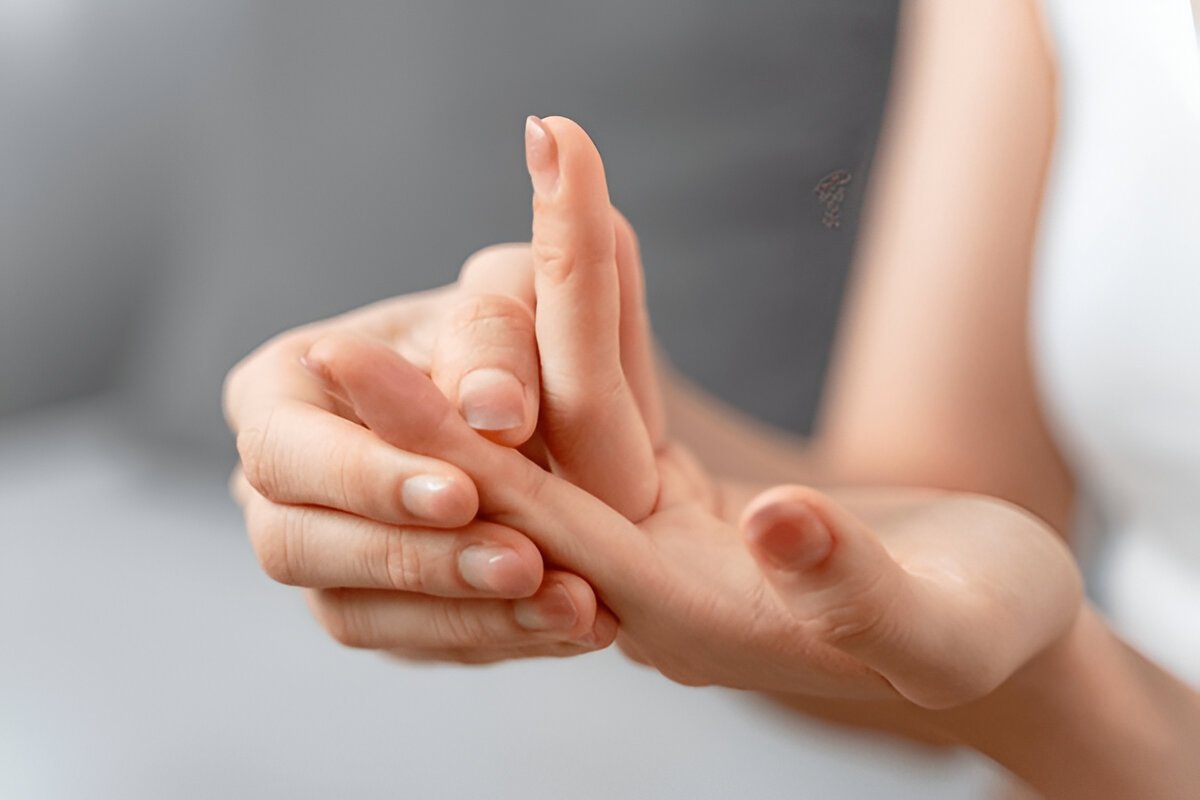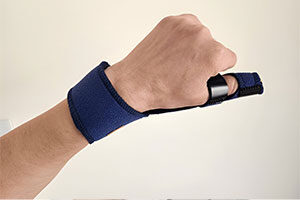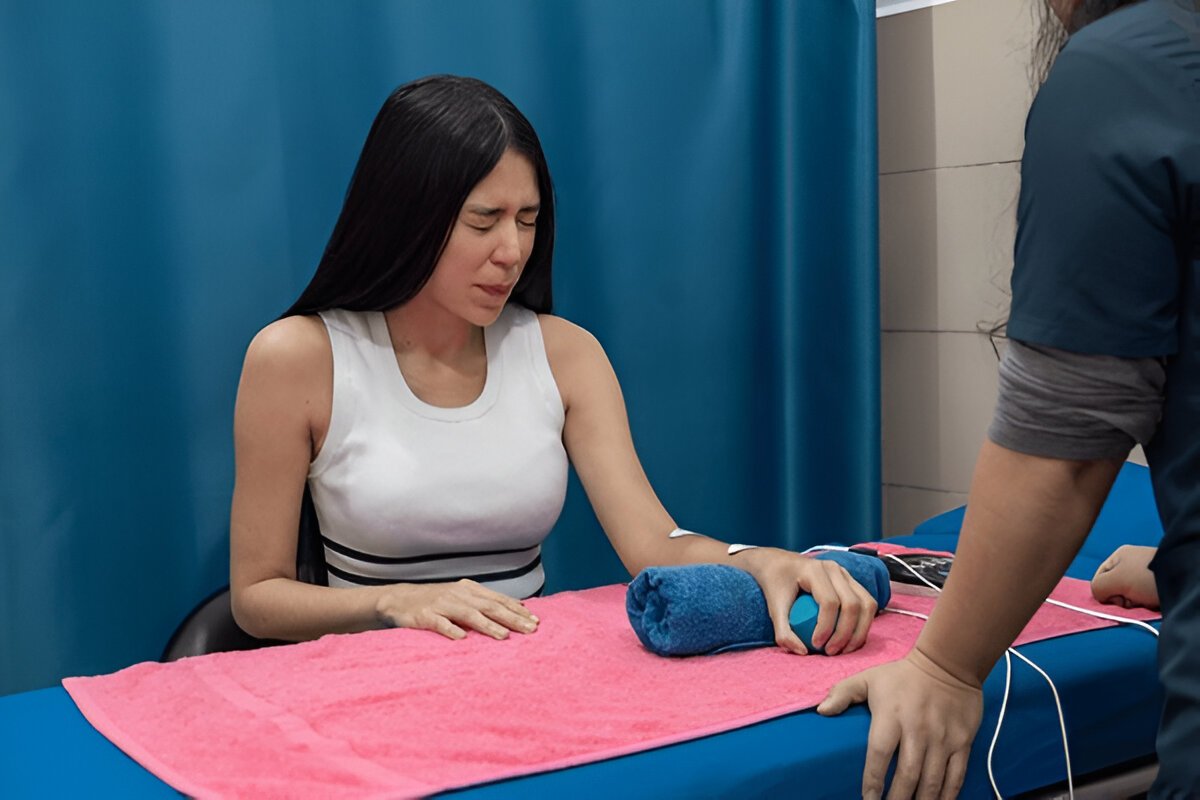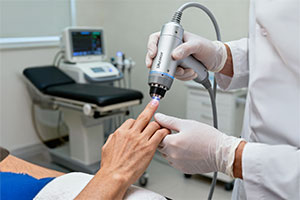Trigger Finger Treatment in Singapore

What Is A What is Trigger Finger??
If your finger catches, clicks or gets stuck when you try to straighten it, you might have trigger fingermedically known as ‘stenosing tenosynovitis’. It happens when the tendon that helps your finger bend becomes irritated, swollen or thickened. You try to make a fist but your finger can’t bend smoothly or it locks in place before finally straightening. That stiff, sometimes painful, movement is a classic trigger finger.
At Rapid Physiocare, we’ve helped many people get back to normal movement in their fingers. With the right care, you can get back to everyday activities without worrying about clicking fingers or locked joints.
Trigger Finger Causes & Risk Factors
So why does it happen? A few common trigger finger causes include:
- Repetitive hand use: Gripping tools, typing or sports such as climbing or racket games.
- Underlying health conditions: Diabetes, rheumatoid arthritis and gout are linked to tendon problems.
- Age & gender: Most common with people in their 40s to 60s, especially women.
- Injury or strain: A finger injury or repeated micro-trauma can trigger it.
But is trigger finger hereditary? Genetics can play a role. If tendon or joint issues runs in your family, you may be more proneto it.
When to Take It Seriously
Not every stiff finger means you need treatment, but certain signs shouldn’t be ignored:
- Clicking or popping when bending the finger
- Finger pain near the base, especially in the morning
- A lump or bump (nodule) in the tendon area
- Finger joint locking in a bent position
- Swelling or tenderness in the palm
- In severe cases, a finger stuck completely straight or bent
Ask yourself: Why are my fingers swelling? Why can’t my finger bend properly? If these sound familiar, it’s time to get check. The earlier you act, the easier recovery tends to be.
Trigger Finger Grades
Trigger finger isn’t one-size-fits-all. Doctors and physiotherapists often describe it in stages:
- Mild – Tenderness, stiffness, slight clicking.
- Moderate – Painful catching, occasional locking.
- Severe – Frequent locking that needs your other hand to straighten it.
- Advanced – Finger stuck in one position.
Knowing your trigger finger gradewill help the physiotherapist to guide you with the right treatment.
Treat Trigger Finger Without Surgery
Here’s the good news: Most cases don’t need surgery. Thetreatment usually starts conservatively with physiotherapy. At Rapid Physiocare, we focus on:

1. Rest, Splints & Lifestyle Adjustments
Sometimes the simplest fixes work best. A trigger finger splint can hold your finger straight at night to reduce irritation. We can also look into small adjustments in your daily activities to prevent flare-ups.
2. Hands-On Physiotherapy
Our team uses techniques like manual therapy, soft tissue release and gentle mobilization to ease tightness and improve tendon glide.


3. Targeted Trigger Finger Exercises
Stretching and strengthening routines are core to recovery. You’ll learn safe appropriate exercises designed to restore smooth tendon movement and improve grip strength.
4. Advanced Therapy Options
When needed, modalities like ultrasound therapy or shockwave treatment may be used to reduce inflammation and boost healing.

When Other Treatments Are Needed
In stubborn cases, injections or surgery may be discussed. But surgery is usually the last option. For many patients, physiotherapy combined with splinting and exercises is enough to relieve pain and restore motion.
Why Choose Rapid Physiocare?
At Rapid Physiocare, we bring:
- Experienced physiotherapists with deep knowledge in tendon and hand conditions
- Personalised recovery plans designed around your lifestyle, job, and activity level
- Holistic care that goes beyond the finger because your hand, wrist, and overall posture matter too
- Conveniently location clinics around Singapore where you’ll get trusted care close to home
We don’t just treat the condition. We help you get back to the things that matter from buttoning a shirt without pain to playing your sport with confidence.
What to Expect in Recovery
Every case is different but most people see progress in weeks not months. Early treatment means faster results. The key is consistency,following your home program and working with your physiotherapy to get full mobility back.
Imagine waking up, gripping your coffee mug and stretching your fingers without pain. That’s our main goal for every patient.
Whether it’s stiffness, clicking or a locked joint we can help you move freely again. Book your appointment at Rapid Physiocare today and get started on pain free, confident hand movement.
Frequently Asked Questions
What is the fastest way to heal a trigger finger?
There isn’t a magic overnight fix, but the fastest recovery usually comes from a mix of rest, splinting, and guided physiotherapy. A trigger finger splint worn at night can keep the tendon from catching, while the exercises help restore smooth movement. Early treatment makes a huge difference the sooner you get started, the less likely you’ll need injections or surgery.
How much time does it take for a trigger finger to fully heal?
Mild cases often improve in a few weeks with rest, splints and physiotherapy. More stubborn cases can take 6–12 weeks or longer, depending on how inflamed the tendon is and how consistent you are with treatment. If ignored, the condition can worsen, so acting early usually results in quicker, smoother recovery.
What not to do with a trigger finger?
Avoid activities that make the catching or pain worse, like heavy gripping, repeated typing without breaks or using tools that strain your hands. Don’t force your finger straight if it locks that can aggravate the tendon. Skipping treatment is also a mistake; resting alone often isn’t enough to solve the problem.
Can a trigger finger correct it self?
Sometimes very mild trigger finger cases ease up on their own with rest, but most people need some kind of help to fully resolve it. Without proper treatment, the tendon often gets stiffer and the locking more frequent. Physiotherapy, splints, and simple exercises greatly improve the odds of full recovery without surgery.
Is physiotherapy good for trigger finger?
Yes — physiotherapy is often the first and most effective treatment. Techniques like manual therapy, soft tissue release, and stretching reduce stiffness and pain, while strengthening exercises restore tendon glide. Many patients recover completely with physiotherapy, without needing any injections or surgery.
Can I fix a trigger finger without surgery?
Absolutely. Most cases respond well to conservative treatments like splinting, lifestyle adjustments and physiotherapy. Surgery is usually consideredas the last resort and only if months of non-surgical care don’t work. The key is starting early so your tendon heals before it becomes too restricted.
What is the cause of trigger finger?
Trigger finger happens when the tendon in your finger becomes irritated and can’t glide smoothly through its sheath. Common causes include repetitive gripping, underlying conditions like diabetes or arthritis and sometimes a finger injury. The tendon swells or thickens, creating the painful catching or locking you feel.

